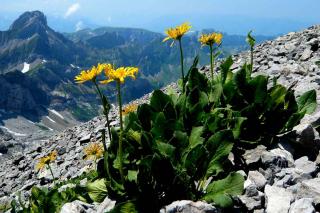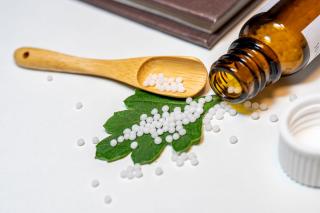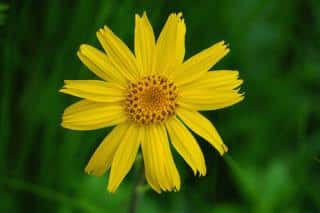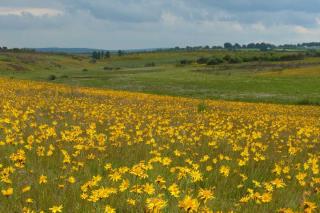

Arnica (Arnica montana) is a plant that used to heal people since the Middle Ages.
Today, pharmaceutical companies use it in their products for its many medicinal properties.
Read also:
• Gaultheria, potent for inflammation
An effective remedy against bruises of all sorts, Arnica montana is often used in the pharmaceutical and cosmetic industries.
It is a beautiful perennial plant of the Asteraceae family. In the wild, it grows in high places like mountain ranges and high-altitude plateaus.
Topical use (or external use), is how Arnica is most often applied. It helps treat:
During surgery arnica helps relieve certain types of post-operation pain.
In dermatology, it relieves insect bites and inflammatory cutaneous skin conditions.
 Thanks to its anti-inflammatory and antibacterial activity, arnica tincture (macerate 7 oz (200 g) flowers in 1 quart (1 liter) 60% alcohol for ten days), used diluted, soothes certain ENT disorders like sore throat, gingivitis and swollen gums or toothaches.
Thanks to its anti-inflammatory and antibacterial activity, arnica tincture (macerate 7 oz (200 g) flowers in 1 quart (1 liter) 60% alcohol for ten days), used diluted, soothes certain ENT disorders like sore throat, gingivitis and swollen gums or toothaches.If you ingest Arnica, a compound called arnicine can lead to fatal poisoning. It is highly toxic.
Arnica is one of the first plants to appear in homeopathic form. These tiny granules of sugar contain minute extracts of the plant.
 In homeopathy, plant extracts are diluted to such a degree that the resulting compounds are virtually absent. That’s why ingesting Arnica homeopathy granules isn’t considered dangerous.
In homeopathy, plant extracts are diluted to such a degree that the resulting compounds are virtually absent. That’s why ingesting Arnica homeopathy granules isn’t considered dangerous.
The medicinal effectiveness of homeopathic arnica is accordingly transferred to the water and sugar of the granules, while eliminating the toxic aspects of the plant.
Proponents of homeopathy explain that Arnica:
 Arnica is native to the mountain ranges of Europe. It is cultivated in different regions of France, Germany, Switzerland and certain portions of Ukraine and Western Russia.
Arnica is native to the mountain ranges of Europe. It is cultivated in different regions of France, Germany, Switzerland and certain portions of Ukraine and Western Russia.
28 more species of Arnica are native to North America. Many of these, especially Arnica chamissonis, share the same health benefits as A. montana.
 Endangered by intensive cattle raising for which entire fields were fertilized to produce hay, in some areas, like the French Vosges mountain range, arnica might have disappeared completely if not for a vast grassroots eco-campaign. This campaign brought together farmers, harvesters, municipalities, pharmaceutical laboratories and National Park rangers to coordinate how best to manage wild arnica.
Endangered by intensive cattle raising for which entire fields were fertilized to produce hay, in some areas, like the French Vosges mountain range, arnica might have disappeared completely if not for a vast grassroots eco-campaign. This campaign brought together farmers, harvesters, municipalities, pharmaceutical laboratories and National Park rangers to coordinate how best to manage wild arnica.
Together, they wrote up and signed the “Arnica convention” in 2007.
It aims to set up proper practices regarding the harvest in order to preserve the resource. For instance, it sets up guidelines such as requiring manual pulling up of harvested plants and matching harvest quantities directly to orders placed by laboratories.
Thanks to this convention, Arnica montana is now sustainably collected and blooms again year after year in that specific location of the Vosges.